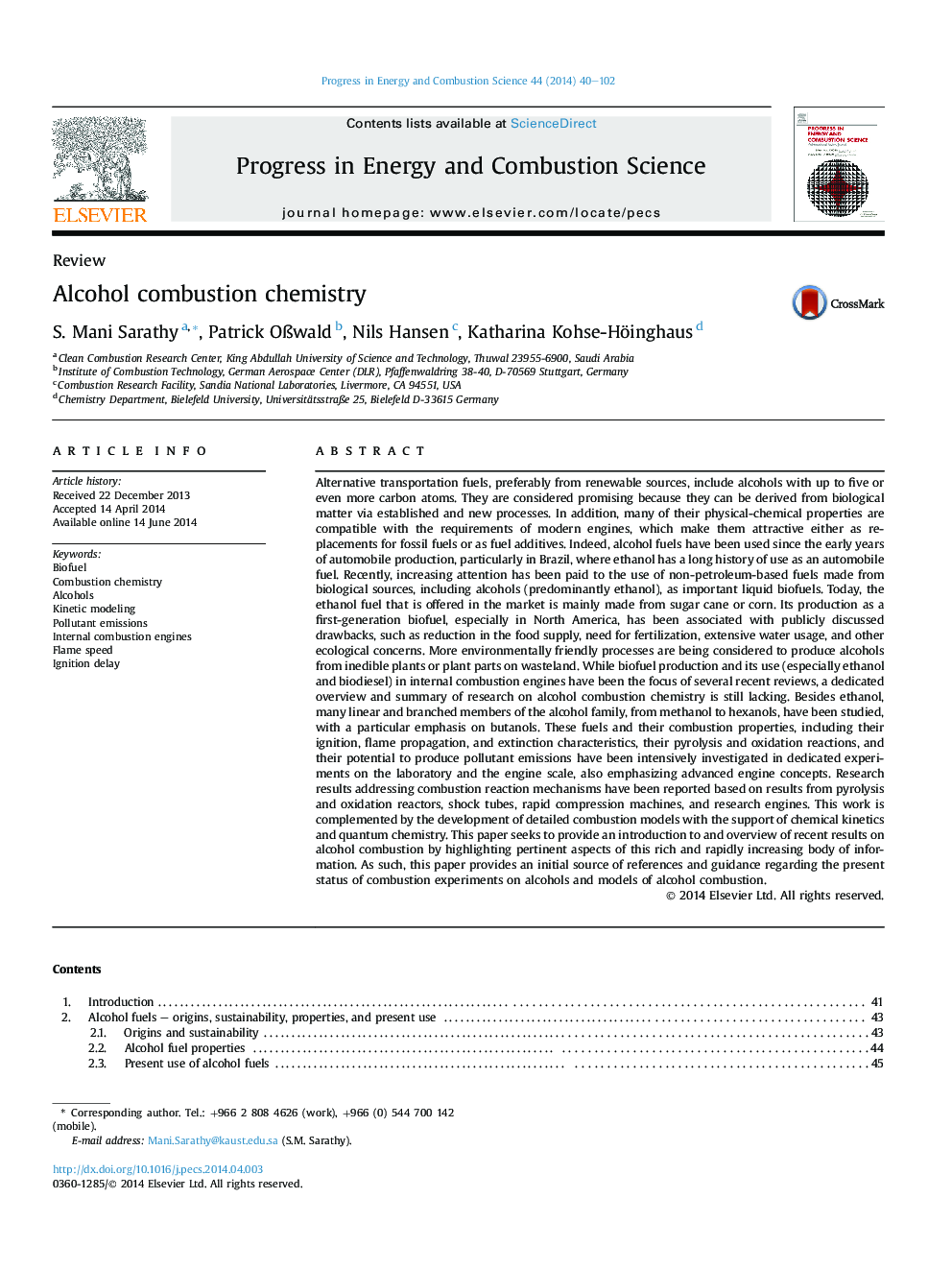| کد مقاله | کد نشریه | سال انتشار | مقاله انگلیسی | نسخه تمام متن |
|---|---|---|---|---|
| 241643 | 466297 | 2014 | 63 صفحه PDF | دانلود رایگان |
Alternative transportation fuels, preferably from renewable sources, include alcohols with up to five or even more carbon atoms. They are considered promising because they can be derived from biological matter via established and new processes. In addition, many of their physical-chemical properties are compatible with the requirements of modern engines, which make them attractive either as replacements for fossil fuels or as fuel additives. Indeed, alcohol fuels have been used since the early years of automobile production, particularly in Brazil, where ethanol has a long history of use as an automobile fuel. Recently, increasing attention has been paid to the use of non-petroleum-based fuels made from biological sources, including alcohols (predominantly ethanol), as important liquid biofuels. Today, the ethanol fuel that is offered in the market is mainly made from sugar cane or corn. Its production as a first-generation biofuel, especially in North America, has been associated with publicly discussed drawbacks, such as reduction in the food supply, need for fertilization, extensive water usage, and other ecological concerns. More environmentally friendly processes are being considered to produce alcohols from inedible plants or plant parts on wasteland. While biofuel production and its use (especially ethanol and biodiesel) in internal combustion engines have been the focus of several recent reviews, a dedicated overview and summary of research on alcohol combustion chemistry is still lacking. Besides ethanol, many linear and branched members of the alcohol family, from methanol to hexanols, have been studied, with a particular emphasis on butanols. These fuels and their combustion properties, including their ignition, flame propagation, and extinction characteristics, their pyrolysis and oxidation reactions, and their potential to produce pollutant emissions have been intensively investigated in dedicated experiments on the laboratory and the engine scale, also emphasizing advanced engine concepts. Research results addressing combustion reaction mechanisms have been reported based on results from pyrolysis and oxidation reactors, shock tubes, rapid compression machines, and research engines. This work is complemented by the development of detailed combustion models with the support of chemical kinetics and quantum chemistry. This paper seeks to provide an introduction to and overview of recent results on alcohol combustion by highlighting pertinent aspects of this rich and rapidly increasing body of information. As such, this paper provides an initial source of references and guidance regarding the present status of combustion experiments on alcohols and models of alcohol combustion.
Journal: Progress in Energy and Combustion Science - Volume 44, October 2014, Pages 40–102
